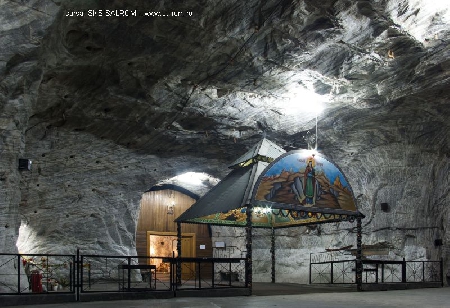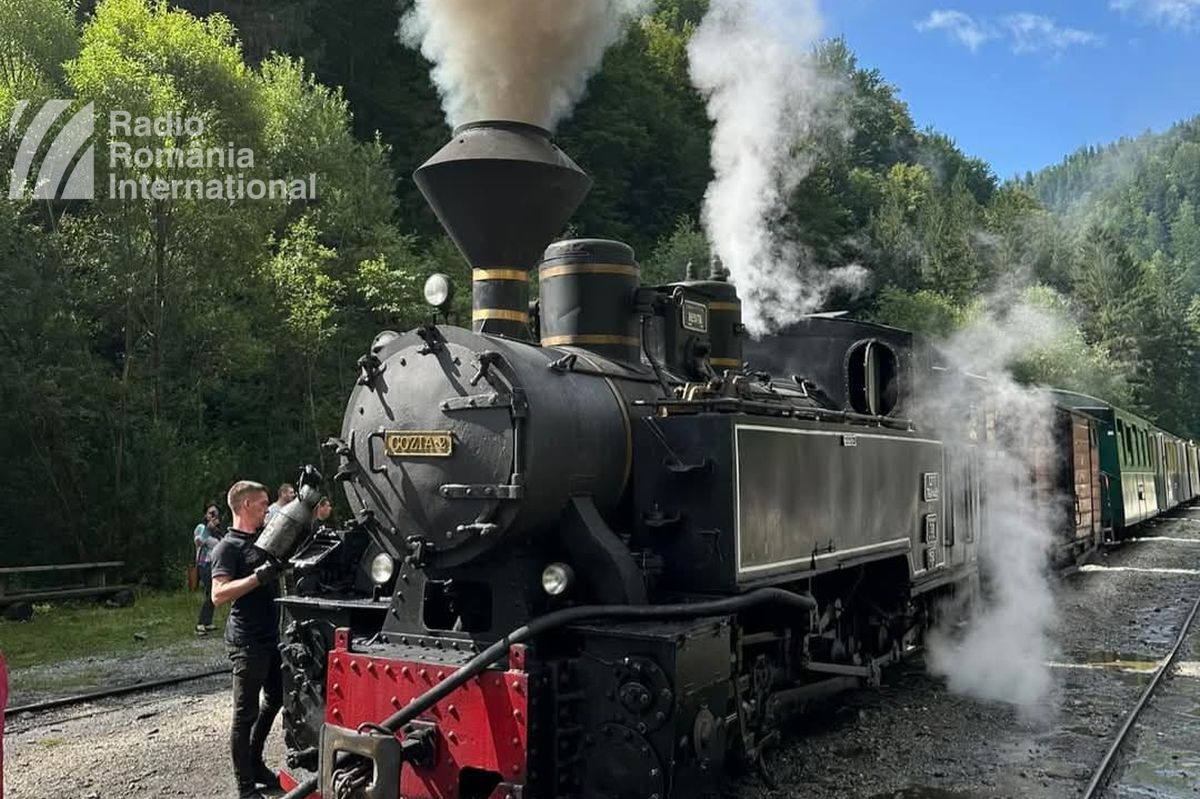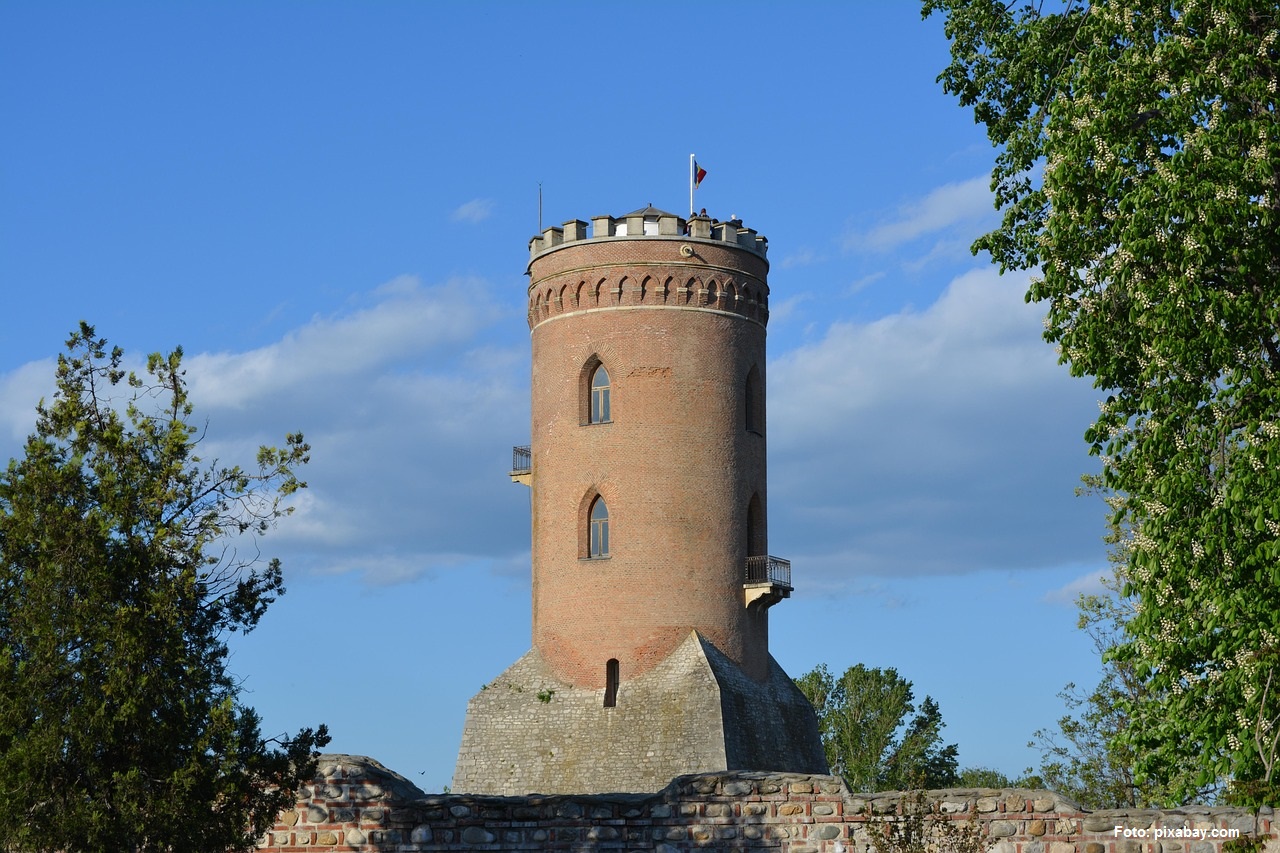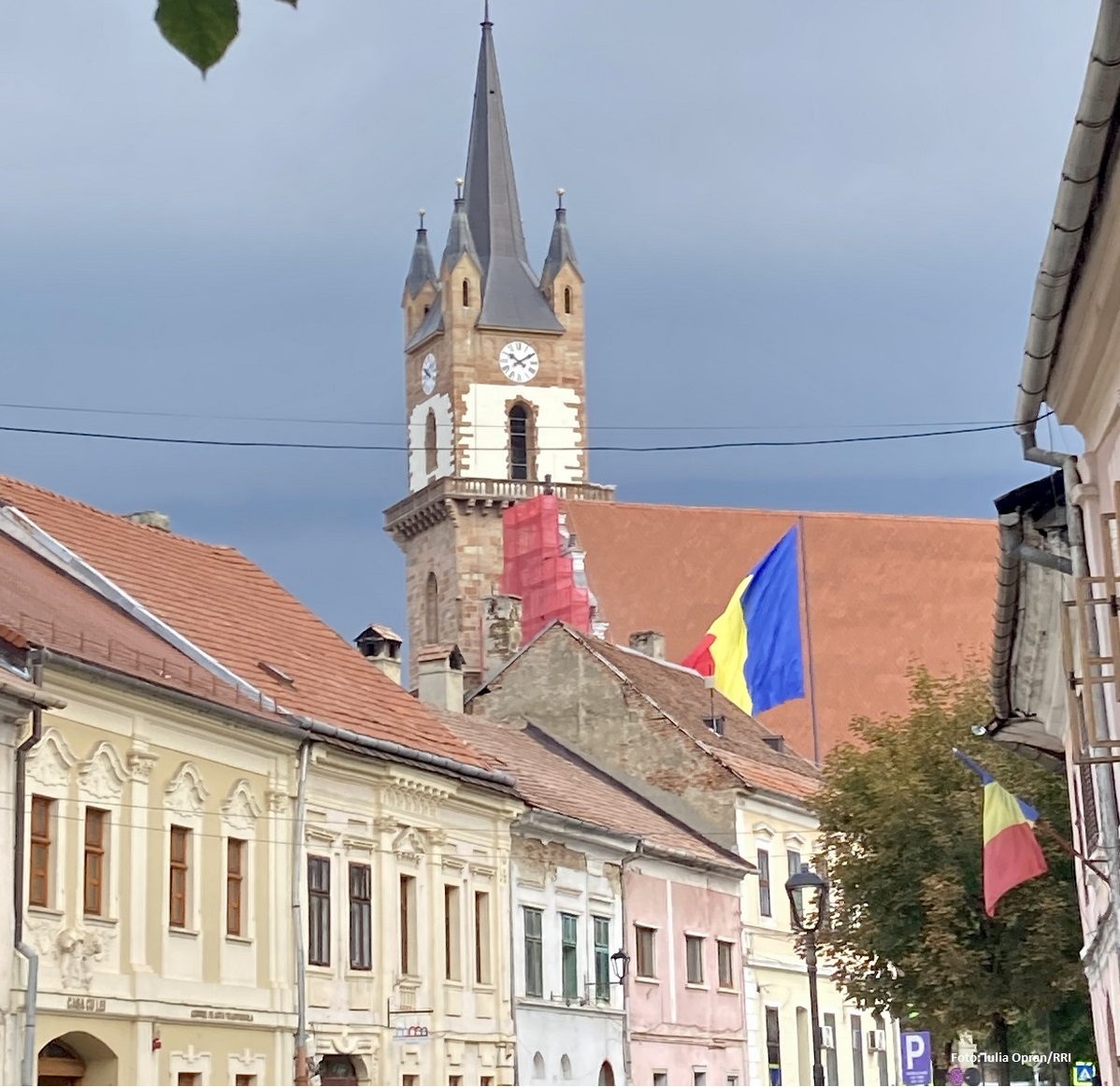The White Gold on Trotus Valley
Todays feature is devoted to RRIs ongoing contest, Romanias Salt Mine Spas, and we will take you to eastern Romania, to the picturesque Trotus Valley in Bacau County.

Daniel Onea, 17.01.2013, 14:03
In the Trotus Valley there lies the Targu Ocna salt mine, with modern entertainment facilities located at a depth of 240 meters, providing guests with excellent opportunities to relax, exercise and treat their respiratory diseases. Within the inner depths of the mountain of white gold, as the locals call salt, also lies an Orthodox Church. Adding to all that is the breath-taking scenery, as a cascading salt-water lake lies at the foot of the mountain.
We sat down with Carmen Maria Tintaru, a geological engineer at the Targu Ocna complex, who told us more about leisure activities at Targu Ocna, as well as about the history of the salt mine:
Carmen Maria Tintaru: “Salt-mining activities here go back in time 500 years. The entire business in the area revolves around this precious mineral resource which we’ve called “the white gold of the earth”. At first, salt extraction in Targu Ocna was limited to smaller areas, to those special mines we call saltworks. Thus salt was extracted here since the 15thcentury and up to the second half of the 19thcentury, when miners switched to a more efficient extraction method that employed the use of trapezoid-profiled chambers. This method was first used at the Moldova Veche Saltworks, also known as the Carol I salt mine, which was operational in the 1870-1941 period, then at the Moldova Noua mine, where exploitation works were undertaken from 1936 to 1968. Starting 1967, a new experimental salt exploitation method was employed for the first time in Romania at the Targu Ocna mine, which is still used to date”.
Alongside the main activity at Targu Ocna, which consists in the extraction, processing and marketing of salt products, the saltworks also provide tourist services, as our guide Carmen Maria Tintaru told us.
Carmen Maria Tintaru: “As regard the early days of leisure activities at Targu Ocna, the first tourist facilities were set up in 1974. It was much later, in 1992, that the Christian-Orthodox Church was built, the first underground Church ever built in a salt mine at European level. The Church was erected under the patronage of Saint Barbara, the patron saint of miners, on the 9thfloor. On July 11, 2005, the salt mine’s entire tourist potential clustered on the 9thfloor, at 240 meters below, in the very core of the salt block”.
We asked Carmen Maria Tintaru how guests could access tourist facilities at the Targu Ocna salt mine:
Carmen Maria Tintaru: “Access is made with the help of cars. The salt mine has busses that carry tourists to all the corners of the underground mine, where entertainment facilities await them. The length of the course is 3100 meters, while the difference between the access level and the 9thfloor is 136 meters. You can get access to all that by means of a slanted, spiral-shaped plan, which goes beyond the level of the areas under exploitation and reaches the level of the 9thfloor, where that particular tourist activity unfolds. What you’re offered in Targu Ocna stands out as something very unusual, and to go with it are relaxation, health and last but not least, knowledge. Respiratory conditions can be treated very efficiently thanks to the aerosols’ positive effect. Also, there are playgrounds for children, which have cradles, toboggans, swings and courts for various sports such as basketball, tennis and badminton. There are areas where you can play pool, there are tables for table tennis and inflatable toboggans for kids. There is also a very interesting salt museum, with various items on display taking us back into the past but also to the early days of the Targu Ocna’s salt deposits. We also have a surgery, a salt water lake, and you’re sure to brim with delight each time you reach down under, because of its spring wells. Also, we have a gift shop and an outdoor café where you can have a cup of tea and a cup of coffee, 240 meters underneath the ground, right at the heart of the salt massif. “
So here we are in a subterranean universe that can provide a unique holiday, a universe which is not hidden and which has not as yet remained undiscovered. The tourists who visited the Targu Ocna salt mine returned to the place, our host Carmen Maria Tintaru assures us.
Carmen Maria Tintaru: ”In the beginning, of course the salt mine was discovered by Romanians. They were delighted with everything they discovered in that little Romanian corner, in that wonderful spot from Moldavia. Then there were the English tourists who visited us, and also the French and people from the former USSR and the present-day Russian republics. But we also had the pleasure to receive guests from other continents from the United States, China Japan. We always welcome them with the same pleasure and with basic info on what salt exploitation means in Targu Ocna, and also on our region’s tourist potential. “
And since we mentioned something about tourist potential, among the must-visit assets in the region is the Magura Ocnei Monastery, which has a long-standing and troubled existence. Three churches had been built there, one after the other. The nuns monastery in Targu Ocna was built between 1750 and 1757 with the purpose of setting up a tourist compound. After the fall of the Communist regime the monastery was reopened. Today’s church was built after 1990, by Epifanie Bulancea the monastery’s prior and archimandrite.
Epifanie Bulancea: ”In 1991 we began the construction works. People were eager to have a church built here, and in one single year we erected it from the foundation up. We erected it gradually, going two meters up, from one week to the other. The Targu Ocna Salt Mines helped me a lot with the vehicles. When they saw I got the church erected they asked me to help them up with their salt church as well. They appointed me an architect. In 1993 the church was finished and between 1993 and 1997 we had the painting done.”
The painting of the church was made in oil, fresco-style. The monastery was built at an altitude of 505 meters in a thick forest.






























